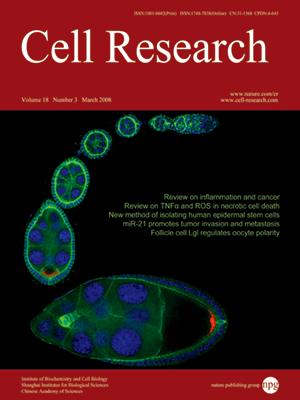
Volume 18, No 3, Mar 2008
ISSN: 1001-0602
EISSN: 1748-7838 2018
impact factor 17.848*
(Clarivate Analytics, 2019)
Volume 18 Issue 3, March 2008: 334-342
REVIEWS
The IκB kinase – a bridge between inflammation and cancer
Michael Karin
Laboratory of Gene Regulation and Signal Transduction, Departments of Pharmacology and Pathology, Cancer Center, School of Medicine, University of California, San Diego, 9500 Gilman Drive, MC 0723, La Jolla, CA 92093-0723, USA
Correspondence: Michael Karin(karinoffice@ucsd.edu )
A potential link between inflammation and cancer has been suspected for over a century, but the exact molecular mechanisms connecting the two remained nebulous. We proposed that NF-κB transcription factors regulated via the IκB kinase (IKK) complex play a critical role in coupling inflammation and cancer and have set out to test this hypothesis in mouse models of cancer. Using mice bearing mutations in the genes coding for the IKKβ and IKKα catalytic subunits we obtained evidence supporting a critical role for IKKβ in tumor promotion and more recently identified the involvement of IKKα in metastatogenesis. Whereas the major pro-tumorigenic function of IKKβ is mediated via NF-κB, the pro-metastatic function of IKKα is NF-κB-independent. In addition to illustrating the critical roles of the two IKK molecules in linking inflammation and cancer and providing an explanation for increased cancer risk in response to persistent infections and inflammation, these results also identify new targets for development of novel anti-cancer therapies and preventive strategies. Instead of targeting the cancer cell itself, as done by conventional anti-cancer drugs, the new therapeutics will target processes that occur within inflammatory cells that are essential for cancer development and progression. Unlike cancer cells, inflammatory cells retain a normal and stable genome and therefore are unlikely to become genetically resistant to therapeutic intervention.
Cell Research (2008) 18:334-342. doi: 10.1038/cr.2008.30; published online 26 February 2008
FULL TEXT | PDF
Browse 1935


